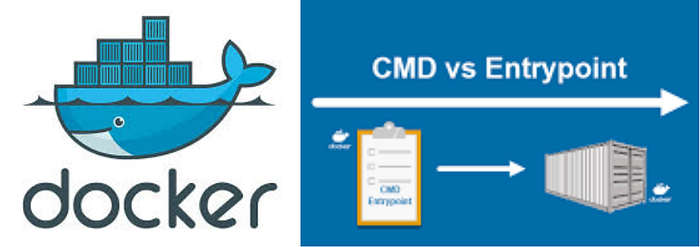
Overview :-
Docker, the revolutionary containerization platform, offers a plethora of instructions to customize and optimize your container builds. Among these, the ENTRYPOINT instruction stands out as a powerful tool for defining how your containers behave at runtime. In this comprehensive guide, we’ll delve into the intricacies of ENTRYPOINT, comparing it with other Docker instructions, and showcasing its practical applications.
When diving into Docker’s Dockerfile reference, you might encounter instructions that seem to overlap or even appear redundant. Two such instructions that often cause confusion are CMD and ENTRYPOINT. While both can be used to specify commands for container execution, they serve distinct purposes.
Understanding ENTRYPOINT
ENTRYPOINT is a crucial Docker instruction that defines the primary command to be executed when a container starts. It sets the foundation for your container’s behavior, allowing you to create more flexible and reusable images.
Practical Example: Building a Sleep Container
Let’s explore the power of ENTRYPOINT through a practical example. We’ll create a custom Ubuntu-based image designed to execute a sleep command upon startup.
- Basic CMD Approach
Initially, we might use the CMD instruction:
FROM ubuntu
CMD sleep 10
Build and run the image:
docker build -t custom_sleep .
docker run custom_sleep
This approach works, but it lacks flexibility. To modify the sleep duration, we’d need to either edit the Dockerfile or override the command at runtime:
docker run custom_sleep sleep 20
- Enhancing with ENTRYPOINT
To improve our container’s usability, let’s leverage ENTRYPOINT:
FROM ubuntu
ENTRYPOINT ["sleep"]
CMD ["10"]
Now, we can run our container more intuitively:
docker run custom_sleep 20
The ENTRYPOINT defines the base command (sleep), while CMD provides a default argument (10 seconds). This combination offers both convenience and flexibility.
Benefits of ENTRYPOINT
1. Improved Readability: ENTRYPOINT clearly defines the container’s primary purpose.
2. Enhanced Flexibility: Users can easily pass arguments without specifying the full command.
3. Default Behavior: CMD provides fallback arguments when none are provided.
4. Override Capability: The — entrypoint flag allows for complete command replacement when needed.
Advanced ENTRYPOINT Usage
ENTRYPOINT can be used in shell form or exec form:
1. Shell Form: ENTRYPOINT sleep 10
2. Exec Form: ENTRYPOINT [“sleep”, “10”]
The exec form is preferred as it allows for proper signal handling and avoids creating unnecessary shell processes.
Conclusion:-
Harnessing ENTRYPOINT for Optimal Docker Containers
By mastering the ENTRYPOINT instruction, you can create more robust, user-friendly Docker images. It enables you to define clear entry points for your containers while maintaining flexibility for end-users. Combined with CMD, ENTRYPOINT forms a powerful duo that enhances the usability and maintainability of your Docker containers.
Remember, the key to effective Docker usage lies in understanding these nuanced instructions and applying them appropriately to your specific use cases. With ENTRYPOINT in your Docker toolkit, you’re well-equipped to build more efficient and user-friendly containerized applications.

